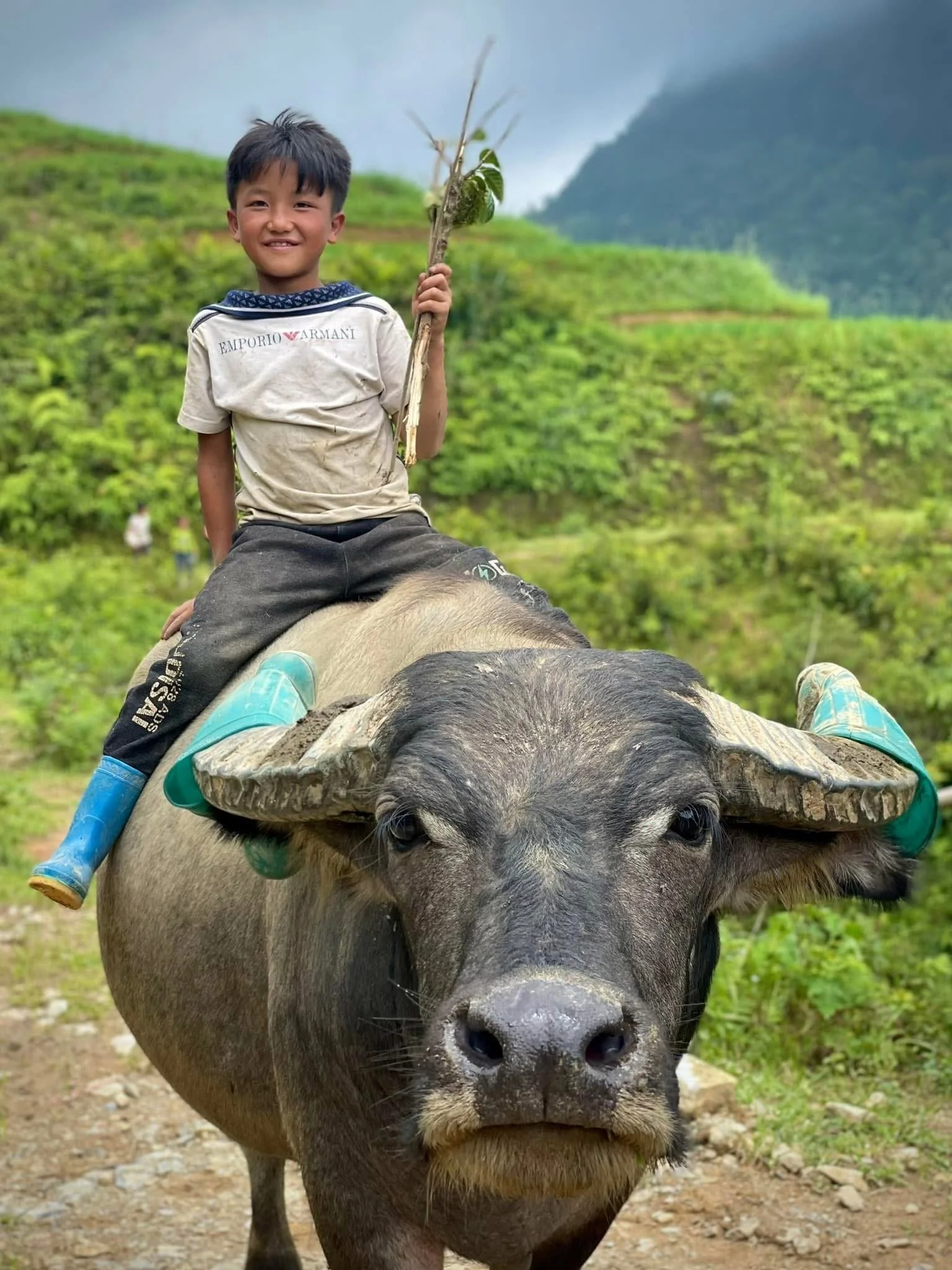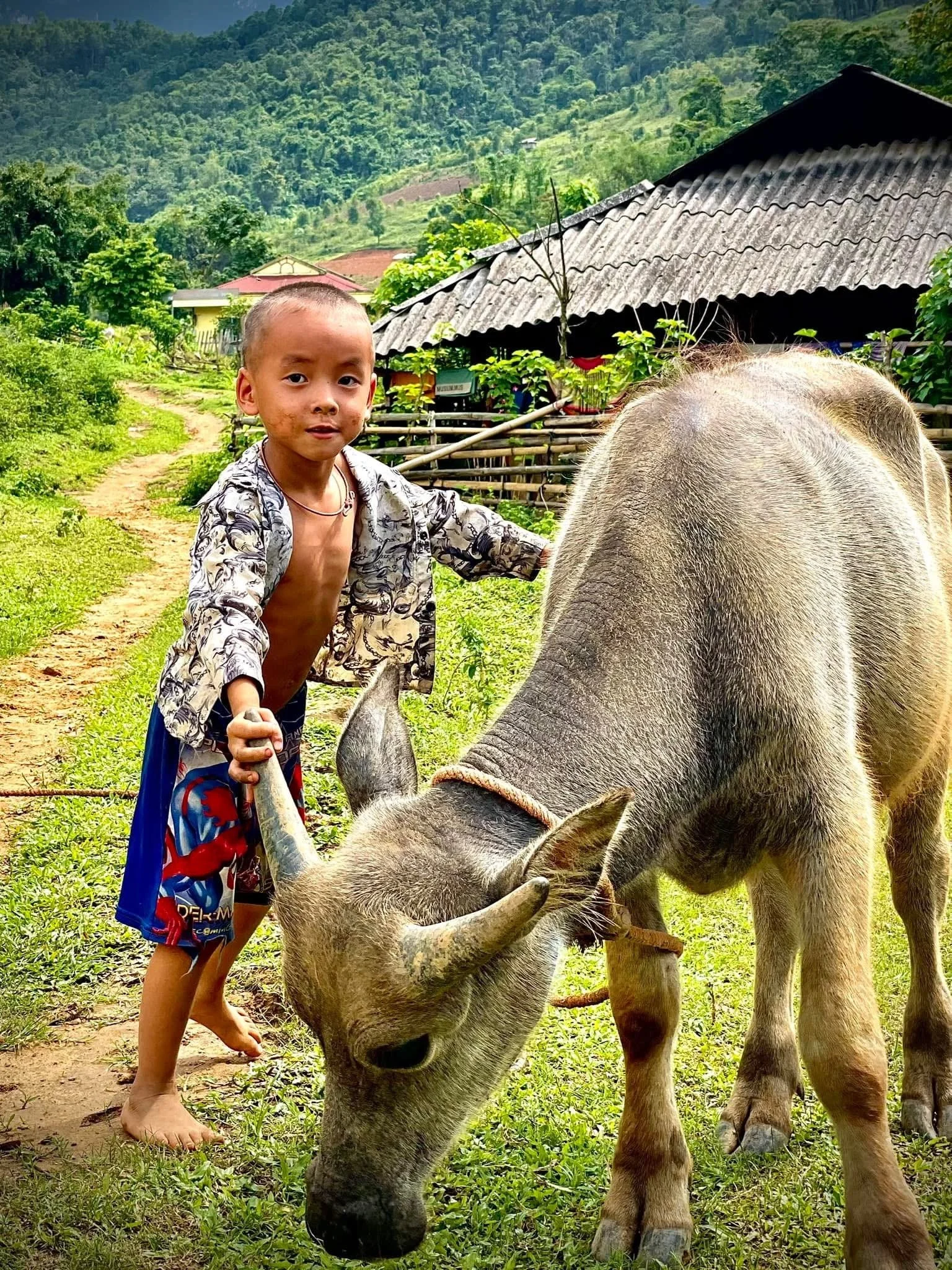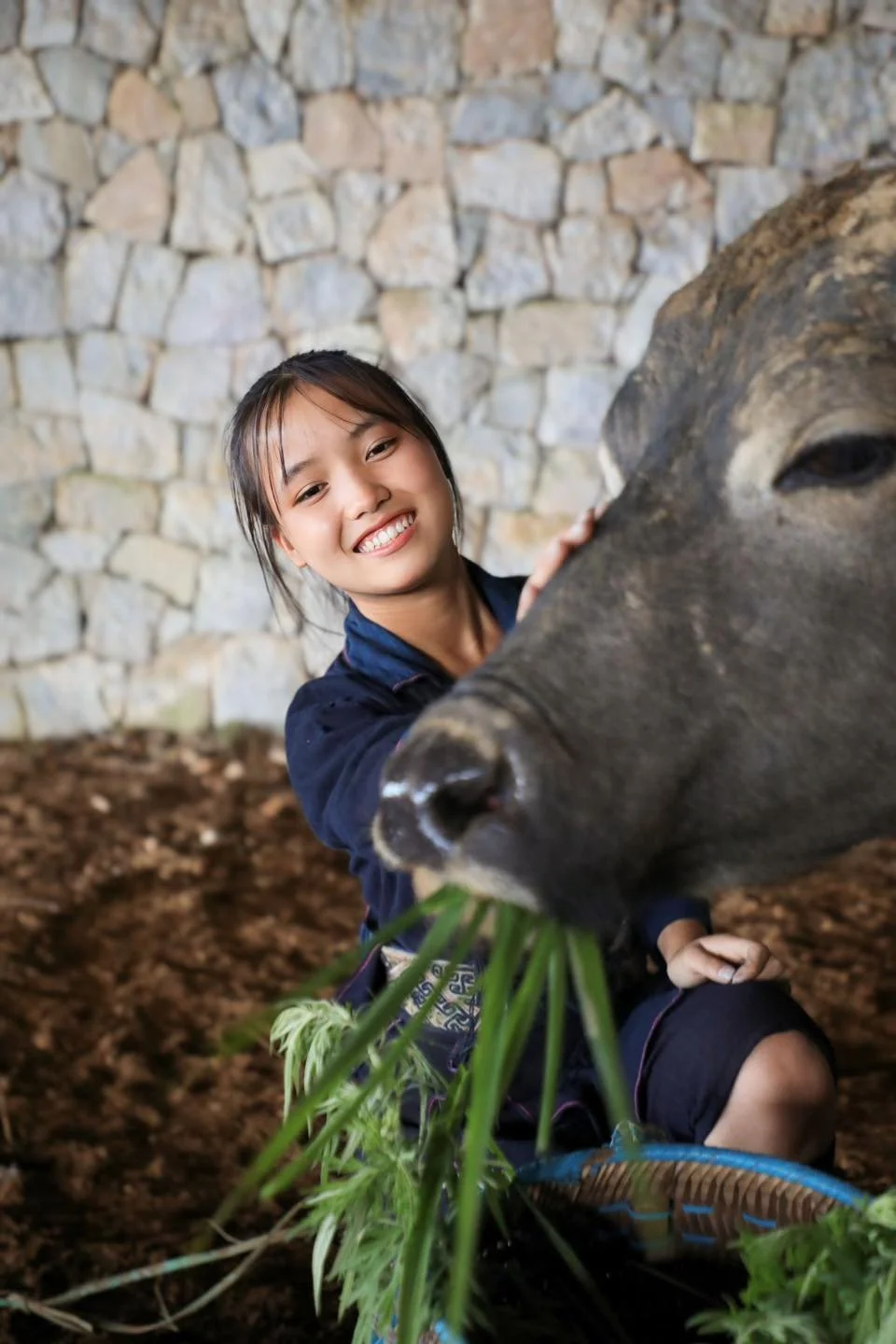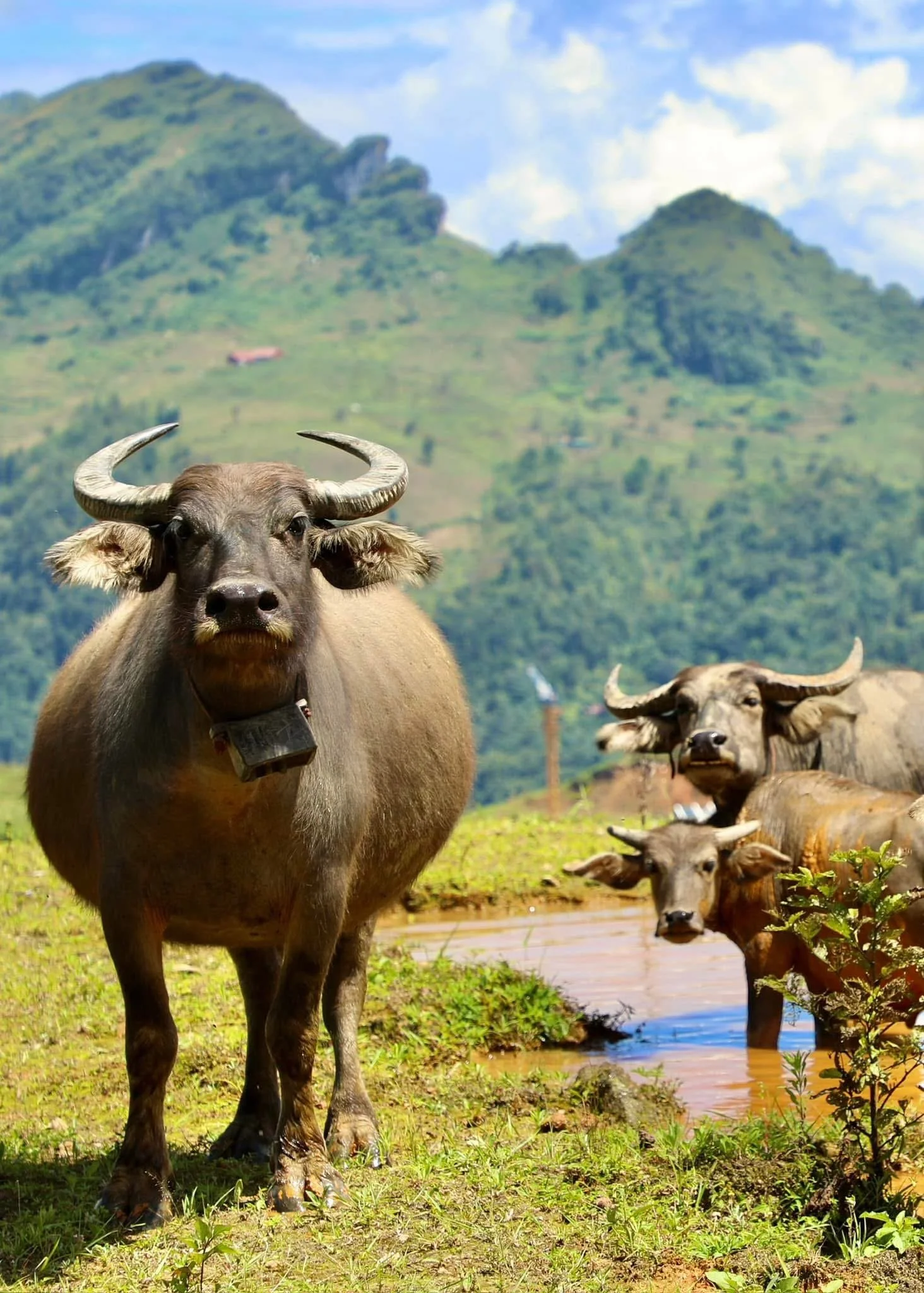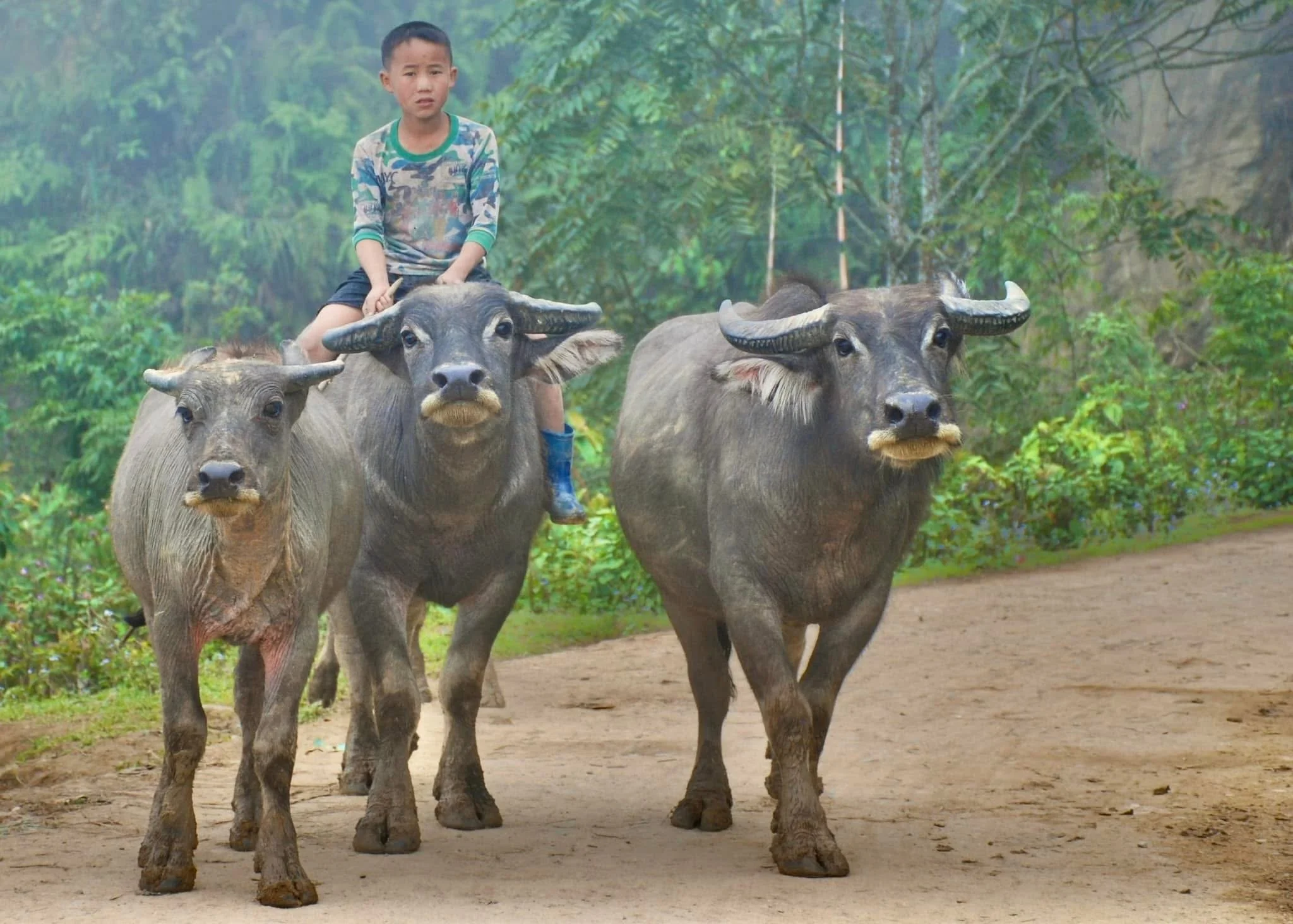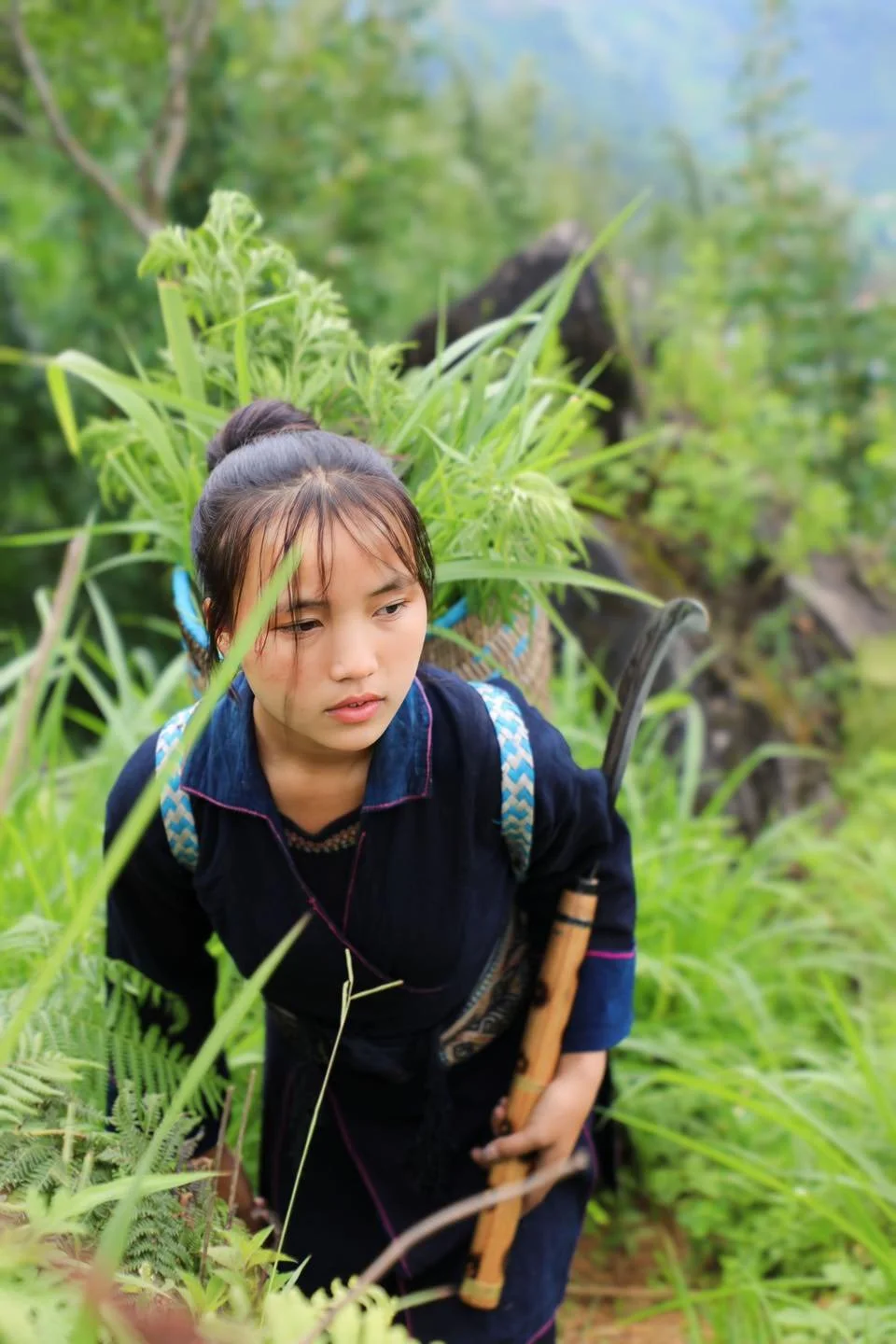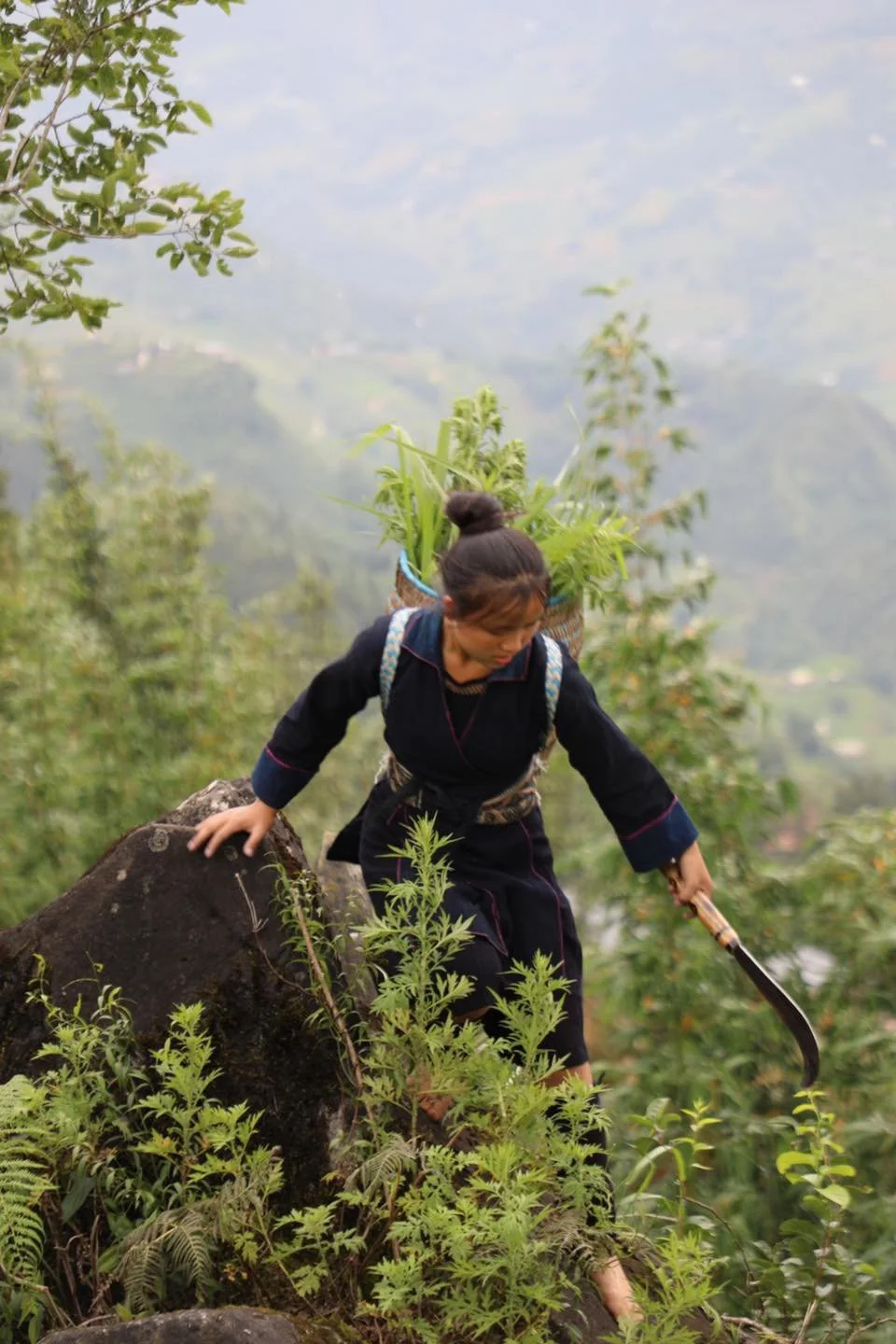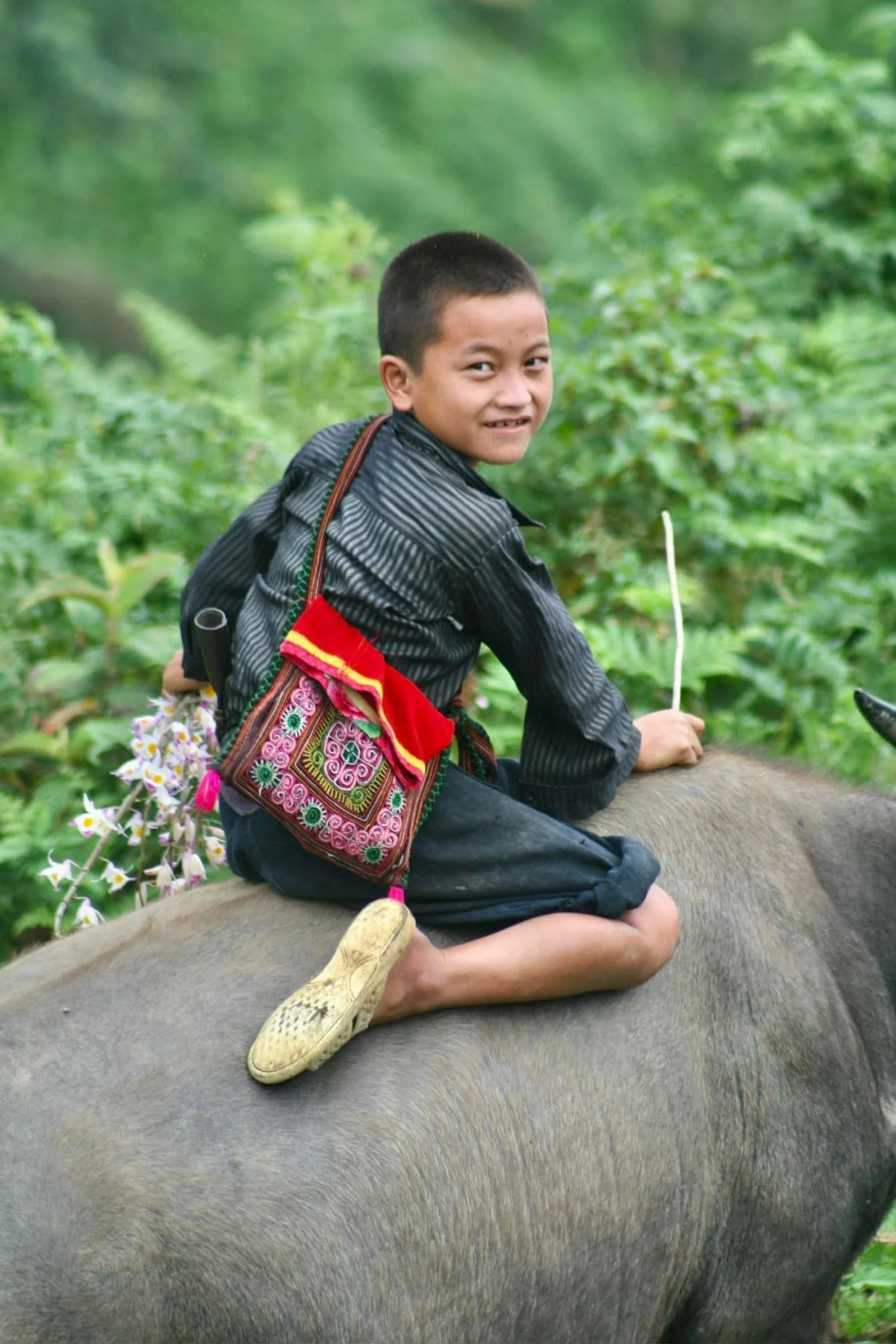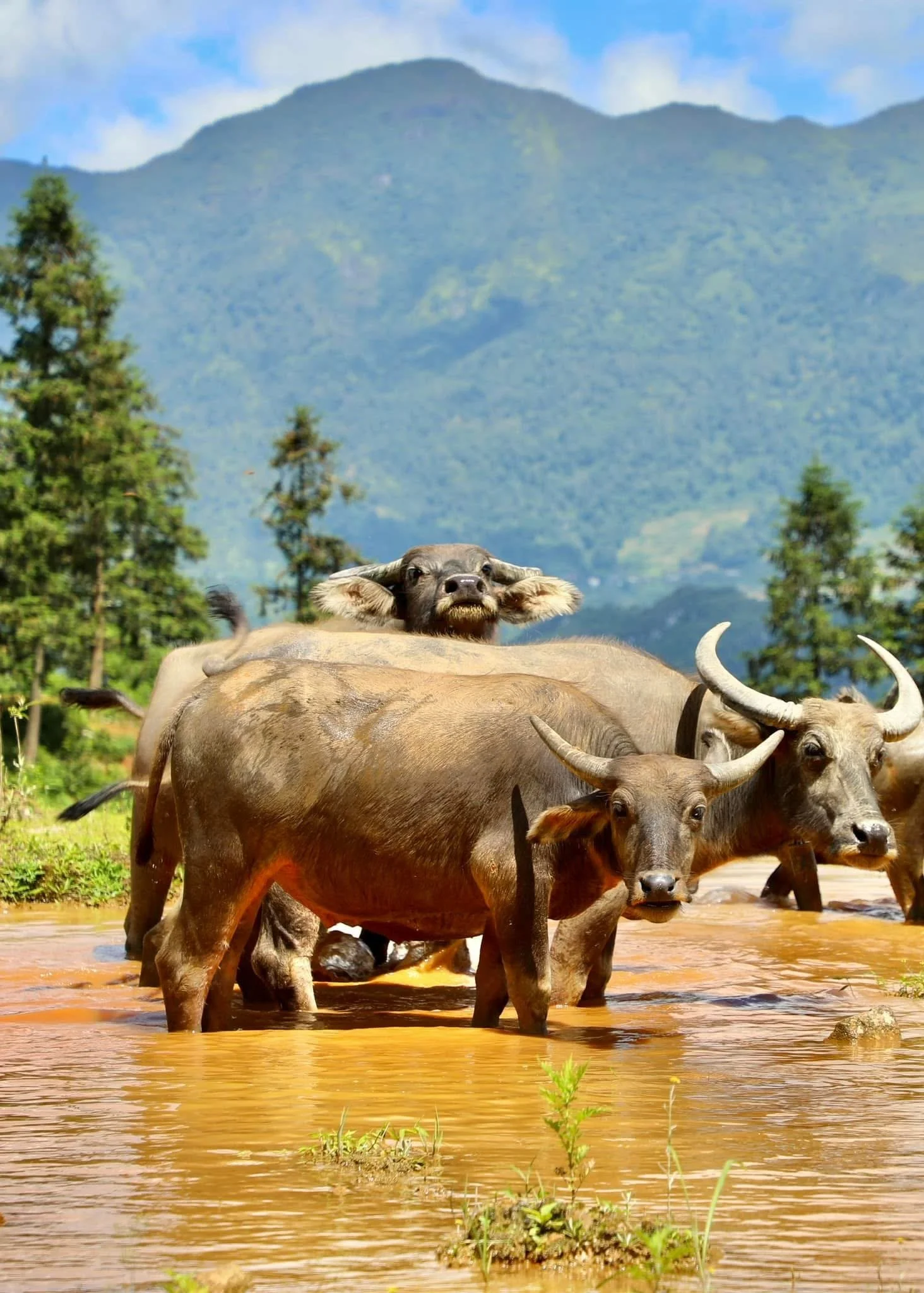Insights and Stories from Sapa and the Northern Borderbelt provinces of Vietnam.
The Heart of the Highlands: The Hmong and Their Water Buffalo
In the highlands of northern Vietnam, the Hmong share a close partnership with their water buffalo, animals that shape their fields, traditions and way of life.
Strength in the Fields
In the mist-covered highlands of northern Vietnam, water buffalo have long stood as steady companions to the Hmong people. They are not merely animals of burden; they are the pulse of rural life. Their strength and endurance make the cultivation of rice and corn possible on steep, uneven slopes where machinery cannot reach. When the plough cuts through the damp earth, it is guided not just by human hands but by a rhythm shared between farmer and buffalo, a quiet understanding built over generations.
For many Hmong families, the buffalo ensures survival. It provides the muscle for planting and the means to feed entire communities. In return, it receives careful attention, shade in the summer heat, clean water from mountain streams, and the steady hand of a child who guides it home at dusk.
A Living Symbol of Wealth and Honour
To own a water buffalo in Sapa is to hold both pride and security. Only about one in ten families in the district have the means to keep them, and for most, they are the most valuable possession they will ever own. Beyond their labour, buffalo represent wealth, stability, and prestige. Their presence at cultural rituals, particularly funerals, underscores their deep spiritual importance.
For the Hmong, the animal embodies prosperity and endurance. Its image appears in folk tales, songs, and embroidery patterns that tell stories of strength and loyalty. It stands as a quiet symbol of the patience required to live in harmony with the mountains.
Guardians of the Land
Between September and April, when the fields lie fallow, buffalo roam semi-wild across the forests and valleys of Sapa. As planting season approaches, they are brought back to graze under watchful eyes. Children often take on this role, herding the animals with laughter and care, ensuring they stay clear of the tender new shoots of rice and corn.
Families work together to protect them, repairing fences, building shelters, and collecting forage. It is a labour of respect, an act of reciprocity. The health of the buffalo is tied to the well-being of the family itself.
A Bond Beyond Work
It might sound strange to those who have never lived alongside them, but water buffalo are often treated as part of the family. They are spoken to softly, their moods understood, their habits anticipated. Farmers know the sound of their calls as well as their own children’s voices. When a buffalo falls ill, the worry is genuine, almost personal.
This bond is rooted in necessity, yes, but also in affection. Over time, work shared under sun and rain builds something deeper than utility. It becomes companionship, one that bridges the fragile line between human and animal.
The Spirit of the Mountains
In Hmong culture, the water buffalo stands as a reminder that strength is not loud or boastful; it is steady, enduring, and gentle when it needs to be. These animals carry the land’s memory in every step, shaping terraces, feeding families, and quietly weaving themselves into the rhythm of mountain life.
They are, in the truest sense, the heart of the highlands.


